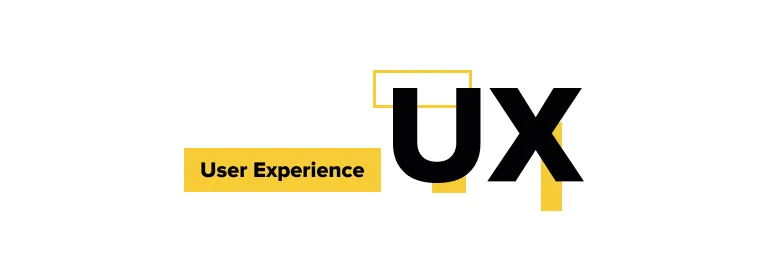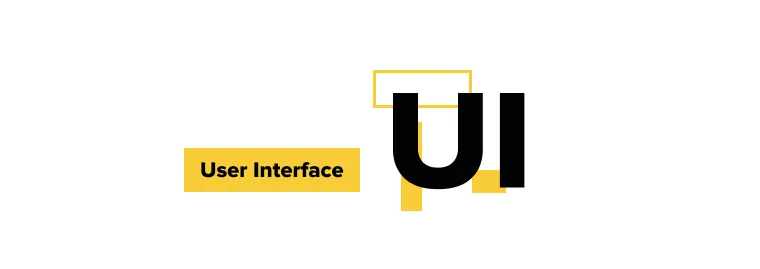Nearly all software developers and their customers strive to provide users with quality app design multiplied by modern graphics with heavy animations and layering. This is fine if it does not harm the key parameters of the IT solution:
speed and smoothness of operation;
ease of use;
design logic.
No matter how fancy a digital product is, its performance must remain high, both on flagship and simpler devices.
The popularity of UX/UI in the IT industry is increasing. Digital Journal predicts a CAGR of 22.25% from 2022 to 2027, and the market value will reach $3.2 billion by 2027. This is driven by the desire of developers and providers to maximize usability for customers, thereby increasing their loyalty to digital solutions.
The success of a digital product on the market depends on:
the demand for the IT solution;
functionality;
value to the customer;
application control logic;
UX/UI digital product.
The last point combines both design and customer experience, which directly affect the usability and quality of digital solutions.
Do you want to compete with the leading players on the market? Implement a modern user interface design for mobile, desktop, or web apps. Enhance your solution with a top-notch combination of UX and UI by utilizing our UI UX audit services offered by Lampa experts!
Difference between UI and UX
Contrary to popular belief, UI and UX are different concepts. Yes, they are closely related, but the very essence and structure of working with each vary. So what is the difference between UX and UI design?
UI – user interface. The elements users see on their screens are directly related to design covers and user interface design. The UI includes:
icons,
fonts,
vector or raster graphics,
styles,
layers,
functional elements,
navigation components,
gestures,
screens.
The UI is like an app's frame, combining design elements and functional components. The smooth rendering and the correct placement of buttons or sliders result in a high user experience. This, in turn, affects the quality of using the app and the consumer experience.
UX is more of a software philosophy than a technical component. In essence, it is responsible for how convenient it is to use an app or component or perform an action. The concept of UX includes:
typical usage scenarios and their optimization;
automation of actions;
software control logic;
placement of elements;
components display order;
availability of quick actions from all menus;
quality of rendering elements;
digital product performance;
the smoothness of the visual design;
marketing.
The primary difference between UX designer and UI designer jobs is that they provide:
UI – high-quality layout and rendering of controls;
UX – integrated methods to improve user experience design;
UI and UX designer together – top experience in using the software by the target audience.

What is user experience (UX) design?
UX is a set of measures the user experience designer takes to ensure the highest product quality, brand value, and satisfaction of TA's needs. Great UX is a smart strategy for developing and promoting an IT solution in the target market. Therefore, the area of responsibility of the UX specialist is vast.
What does a UX designer do?
It is complicated to specify the role of the UX designer because they are engaged not only in the visible part of the product design process but also in the complex development of product promotion strategy. This includes:
marketing;
path from presentation to purchase;
overall operating experience;
product value enhancement;
interaction design;
IT solution and market analytics;
bug fixing;
user support.
The specifics of working on the UX are such that the expert needs to see the whole picture of trends and the audience's needs in the market. They give valuable recommendations that help the product guarantee the best user experience to developers, designers, managers, and product owners.
Strategy and content
Analysts and managers are not the only ones involved in development planning. A UX specialist has an almost key role in this process. If the consumer factor is not considered when working on a project, it will result in a bad UX, and, as a rule, such an IT product will be doomed to failure.
Wireframing and prototyping
Great UX is the holistic perception of a digital product and all of its components, including marketing, a path to purchase, and consumer experience. Because of this, the role of a UX expert in design engineering and prototyping is significant. They evaluate the design from the customer's perspective and suggest top practices to improve usability. Ultimately, a $1 investment is converted into $100 in profits from loyal users.
Execution and analytics
Of course, no project can do without collecting metrics and feedback from the TA. It is the best way for a UX expert to understand how valuable the product is to the audience. Thanks to this data, they can fix bugs, implement new algorithms for working with clients, and offer relevant updates to software interaction mechanics.
UX design examples
You can argue endlessly about how to provide the best UX on the market. But why reinvent the wheel when there are many examples of effective UX design, confirmed by high-ranking resources. Let's look at the top three best practices from global brands.
Netflix
-b389.png)
The service is a demonstration of a properly implemented UX. Everything is implemented with care for the consumer, from the dark design theme (and most users watch movies or TV shows in the evening) to the animated preview of video files. Look at the automatic playback or skip to the next episode right in the player. Nothing special? Not all streaming services can do that.
Airbnb
-1a7e.png)
This is a good illustration of how the relationship between UX and UI experts results in the service's popularity. The platform ranks first in its category due to its flexible filtering system, search details, variability, and low billing. Add to that the lightweight design, fully cross-platform, and high speed, and you get an optimal UX highly appreciated by millions of people.
Glovo
-89e1.png)
The top implementation of a good UX service for food and drink delivery. Convenient navigation, high interface response speed, logically placed controls, and detailed product search filters – all for easy ordering. Accordingly, customer loyalty increases if they see that the service provider cares about them.

What is user interface (UI) design?
The visual component of an IT solution of any complexity is its calling card and sometimes the face of the brand. Most UI designers might think adding more effects to animations or actions will make the software popular. But this is entirely wrong.
Good product design is a combination of factors:
correct stand and layout of controls on the screen;
"lightness" of components and interaction areas;
no graphical or functional bugs;
easy app control logic;
consistency of navigation;
adaptive design for different devices and screen types;
"light-weight" graphic design;
vector elements instead of raster ones;
fine work with overlays, shadows, and blur.
A designer or a UI designer should ensure that the digital product has the clearest possible control logic and a visually pleasing design style. You can achieve this in different ways, such as using an adaptive framework and intelligently structuring the navigation and interaction elements.
What does a UI designer do?
Design teams should focus primarily on UX, secondly, on trends in the design industry, and lastly, on graphics. Therefore, the main tasks of a good UI expert are as follows:
create and optimize the interface;
adapt and place controls;
implement multifunctional components;
test and debugging;
design of the text input fields and tooltips;
implement consistent navigation;
create a grid of elements;
smooth the effects of moving between the screens;
interface design in one style (forms, fonts, placement).
UI, digital design, and UX are closely connected. Only harmony between all the participants of design deals can lead to an effective result. You will ensure your profits and brand popularity by providing the consumer with a top-notch interface with polished mechanics and algorithms.
The look and feel of the product
UI design is the process of creating a modern, easy, and fast interface for customer interaction with services. The way consumers perceive your product affects its market popularity. For example, the benchmark of the IT industry is rightly considered to be Apple, with its holistic approach to implementing an interface and interaction between a wide range of devices. One can only say about the popularity of this brand's products that there are no users worldwide who have not heard of Cupertino gadgets.
Responsiveness and interactivity
UI design refers to the organization of an app's operating space. The better structured the active and passive elements on the screen, the more holistic the perception of the product and the higher the level of customer loyalty. When creating an interface, do not forget about the current formats and sizes of screens, placing interactive elements at the bottom and information blocks at the top. A good example of such implementation is Samsung's OS OneUI system software.
UI design examples
There are a lot of perfect examples of experts projecting their design skills onto consumer apps. They successfully combine the key principles of modern UI/UX and implement top design styles with easy controls. Let's explore the top three design choices that have won the love and devotion of consumers.
Spotify
-1a78.png)
Logical navigation, cross-platform and convenient placement of all elements on the screen. The same applies to contextual menus and actions with songs. Controls, moving through songs, shuffling songs – everything is organized intelligently, beautifully, and logically. It doesn't matter what device you're running the app on – it will work without the slightest problem with the interface.
-f84f.png)
Three components make this resource stand out from the competition: beautiful image layout, light navigation, and logical control. We have to hand it to the designers; with a good Internet connection, the loading speed and quality of the content are excellent, even on outdated devices. As for contextual menus and interaction – there are no visible problems at all. The platform is popular with millions of consumers around the world. The conclusions are obvious; the UI/UX resource is top-notch.
Cargo.one
-10ec.png)
A light interface with logical navigation, pleasant visuals, and detailed flight search filters are the key components of the service, appreciated by millions of users. The screen space is cleverly filled with interactive elements and content with comprehensive information. The light visual style and low hardware requirements are the best way to attract a wide audience, and it works great even in 2023.
How important is UI/UX in mobile app development?
You've probably already figured out what is the difference between UX design and UI design. But the point is that these two concepts are closely intertwined. Exclude one thing from the development, and you will get an inefficient mobile/web app that will fail already at the MVP stage.
Only the right UI/UX layout can ensure a digital product's longevity and success in the target market. This fact is proven by global tech giants such as Apple, Samsung, Xiaomi, BBK, Google, Microsoft, and Adobe. Similarly, with other business industries: Pinterest, Spotify, Glovo, Airbnb, and Amazon. People are inspired by their examples, their designs are plagiarized, and their popularity is envied. What's not a sign of a perfectly implemented UX/UI that attracts and retains millions of users worldwide?
Bottom line
Now you know precisely what UI/UX design stands for and its role in branding and promoting IT solutions. To maximize your product's potential, you need the help of industry experts. And Lampa will provide them for you.
By cooperating with the Lampa team, you get:
quality customer service;
comprehensive market and competitor analytics;
access to Middle and Senior level specialists;
the wisdom gained over the years;
effective and efficient result of cooperation;
quality assurance and long-term support.
Don't put off launching your project for too long. Delegate it to Lampa experts and get a profit with 9900% ROI in UI/UX!